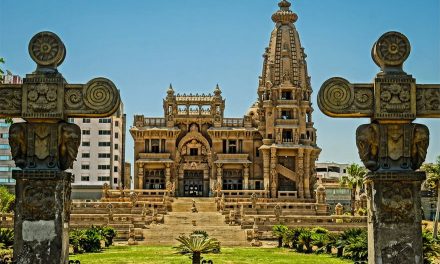Nandinagari script is the western variety of the archaic Nagari script of northern India. Nandinagari is also found in the inscriptions and manuscripts available in the western part of a few southern states; for example, south Maharashtra, Karnataka and Andhra Pradesh. That is why Nandinagari is also known as southern variety of Nagari.
Origin Nandinagari is a descendent, as all indigenous scripts of India and Southeast Asia are, of the Brahmi script. This script was developed through various stages. It is closely related to northern Nagari which took its identifiable shape as early as the tenth century A.D. The modern Devanagari, which is now used for writing and printing Sanskrit, Hindi, Nepali, Rajasthani and Marathi, is a refined and standardized form of old or archaic Nagari script. Most probably, since the refined Nagari is used for writing Sanskrit which is venerated as devabhasha (language of divinities), it is called ‘Devanagari’.
Nandinagari has never been used for printing and hence it lacks the necessary refinement and standardization. Nevertheless, its importance in the areas of epigraphy can’t be ignored. There are innumerable manuscripts written in Nandinagari, covering vast areas of knowledge, such as Vedas, philosophy, religion, science and arts. These are preserved in the manuscript libraries, particularly those in the southern regions of the country.
Nomenclature
It is difficult to present any exact etymological meaning of the name ‘Nandinagari’. The first part of the term ‘nandi’ is rather ambiguous in the present context. It may mean ‘sacred’ or ‘auspicious’ (cf. Nandi verses in Sanskrit drama). Nandi is the name of Lord Siva’s brisha vahana (bull vehicle). Nandi bull is widely worshipped in the South, particularly in Karnataka. As a matter of fact, the sculpture of Nandi bull has become a cultural symbol of Karnataka. The name ‘Nandinagari’ may, therefore, mean ‘a script which is prevalent in a region where Nandi bull is venerated’. The second constituent of the term, that is ‘nagari’, indicates that Nandinagari is a variety in the family of Nagari. It is quite probable that first the Saivites adopted the Nandinagari script and thereafter it was accepted by Vaisnavites as well.
Epigraphical Use
As regards the period of epigraphical use of Nandinagari, it may be said safely that Nandinagari is found to have been used since the tenth century A.D. But the script of a few inscriptions of much earlier time (say, 6th, 7th and 8th century A.D.) may be identified as archaic form of Nandinagari.
As regards the epigraphical use of the Nandinagari script, it may be mentioned that majority of the inscriptions, particularly the Sanskrit ones, of the period of Vijayanagara Empire are inscribed in Nandinagari. A. C. Burnell held that Nandinagari was used exclusively for writing on palm leaf. This view is supported by Shivaganesha Murthy also. But the existence of innumerable inscriptions in Nandinagari invalidates this view altogether. We can only say that, there developed two types of Nandinagari, slightly differing from each other – one used in the inscriptions, inscribed with chisel and the other used in palm leaf manuscripts written with the help of stylus. Obviously the latter type is rather cursive.
Some of the modern epigraphists opine that Nandinagari is less legible. But this view is also not correct. To one, who can read the Nagari of medieval inscriptions and manuscripts, Nandinagari is perfectly legible and transparent. It seems to be practical to furnish a chart of the basic letters of the Nandinagari alphabet before discussing the characteristics and variations of the script. The characters are given below:
The system of adding medial vowels in Nandinagari closely resembles that of Nagari. Here are a few examples:
It may be noticed from the chart that the difference between Nandinagari and Devanagari in the style of adding medial vowels is found only in one case. That is in adding the short-i where the vertical stroke (f) is present in Devanagari it is missing in Nandinagari. The other small difference is in adding long-u. In Nandinagari a slanting tie is added at the bottom of the letter, whereas in Devanagari a cursive loop (w) is found.
Since the Nandinagari script was never been standardized, and it had been used in a vast area during a long period of several centuries, obviously variations in forms in case of a few letters could be discerned.
The constituents and ligatures in conjunct consonants in Nandinagari are easily identifiable as they are in Devanagari. There are, however, a few exceptions. Though Nandinagari script is no longer in vogue, neither for printing nor for writing, no scholar of Sanskrit language and literature can afford to remain ignorant of this script. For the students of Indian epigraphy and palaeography, learning Nandinagari is a must. It is also proved to be very useful for those who are engaged in in-depth textual study of Virasaiva and Madhva Vaisnava works. Nandinagari is helpful in another way: one who is proficient in it can read or learn Jain Nagari script with less effort.












for nandinagari, where is the script illustration s stated in the article ? very disappointing tha i could not fidn this….